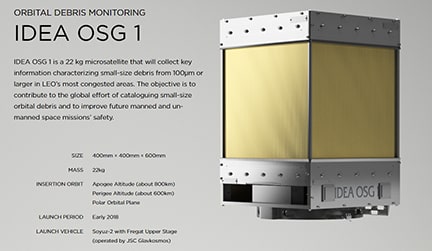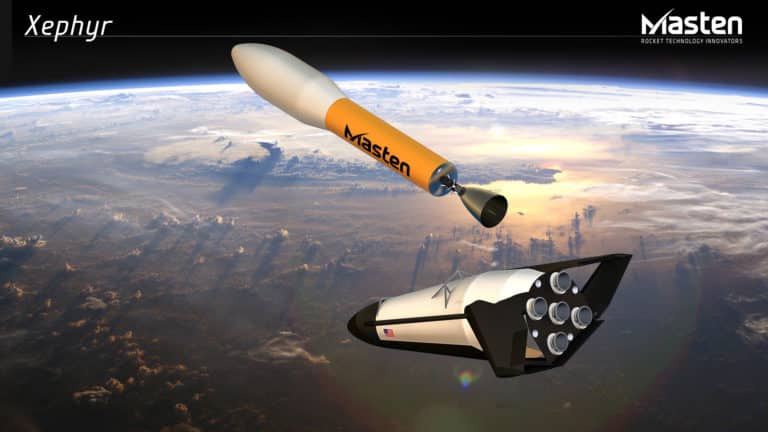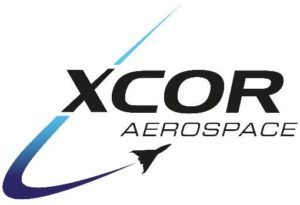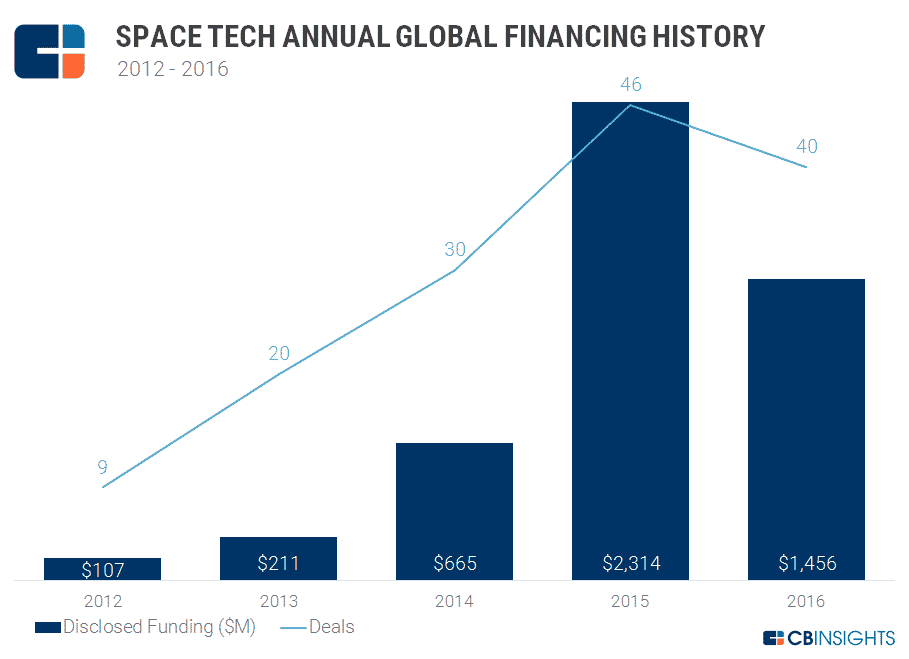8 NewSpace Startups Prove it IS Rocket Science
Table of contents

All this talk about Elon Musk taking everyone to Mars got us to thinking about sci-fi movies that feature cool spaceships. Those of us from a certain generation favor the USS Enterprise. The new movies are a blast, even if Kirk doesn’t get the hook-up with blue-skinned alien babes like in the Shatner days. But it seems like in every other movie they blow the ship to smithereens. Our first thought on seeing the Enterprise disintegrate as it falls into some planet’s atmosphere: That’s going to cost a lot of money to replace. The Geeks at Gizmodo even calculated what it would cost to build a starship and came up with a price tag of nearly $500 billion. That’s easily more than the entire 21st-century global space economy combined. A lot more dollars need to flow into the “NewSpace” economy before we can ever develop warp drive.
It’s happening slowly—the funding, that is. Until about 2012, there was little venture capital dollars flowing into the private space tech industry, referred to in some circles as NewSpace. The data crunchers at CB Insights put together the graph below showing the growth of space tech financing, which peaked in 2015 at $2.3 billion. Most of the money in 2016–$1.2 billion—actually went to OneWeb, Richard Branson’s pet project to bring global internet to the masses. That means only about $300 million became available for the other 39 deals that went down that year, according to CB Insights. That’s not really much cash given the capital-intensive nature of the NewSpace sector, especially for companies involved in designing and building rockets and propulsion systems.
Further, consider that there are about 70 countries with space programs that spend around $41 billion a year. The top 10 nations account for three-quarters of that pie, while NASA alone has an annual budget of close to $20 billion. In other words, public funds in the form of contracts and grants are also tight—and usually go to the Lockheeds and Boeings of the world. Throw in the fact that rockets occasionally blow up and you have to be pretty confident in your technology—or at least pack a really good sales pitch—to enter the NewSpace Race. And to invest in space tech and the NewSpace economy? Well, that’s another story altogether.
This article isn’t about SpaceX—we’ve all heard enough about Mars and Musk’s hair—or even rival Blue Origin. Here we look at eight space tech startups still mostly flying (or crashing) under the radar, hoping the NewSpace economy doesn’t go supernova.
Accion Systems
Funded for $12.5 million (including a $3 million Department of Defense grant), three-year-old Accion Systems stands out in the NewSpace sector for a couple of reasons. Most interestingly, its co-founder is a woman in a male-dominated field who helped spin the company out of MIT right after she completed her Ph.D. defense. Her company has developed a lightweight ion propulsion engine that ditches the heavy nuts and bolts of more toxic chemical propellant systems. Less weight doesn’t mean less power, however. The propulsion system is designed for satellites, with hopes that better maneuverability will help future constellations maneuver nimbly through the junkyard that now surrounds the planet.
Update 10/11/2018: Accion Systems has taken in $3 million from Boeing’s HorizonX Ventures to help the company scale and fund scheduled launches of their small satellites by November. This brings the company’s total funding to $15.5 million.
Astroscale


NASA estimates there are about 500,000 pieces of junk floating around our blue ball, traveling at a speed of 17,500 mph. That’s fast enough that even a fleck of paint can act like a bullet. One solution from Astroscale involves sending a micro-satellite (i.e., future space debris) into orbit next year to characterize the really small bits of junk hurtling through the near-cosmos. The company says last year’s capital infusion will also be used toward developing and testing new propulsion systems and a spacecraft docking system.
PLD Space
Reduce, reuse, recycle. That’s become the mantra of more than one company in the NewSpace economy. Spanish startup PLD Space is applying the concept to launch vehicles, similar to SpaceX—but with lots less money. The small startup did close a Series 1A last year for $7.1 million, SpaceNews reported. That brings reported funding to about $11 million. Last year’s investment will support the company’s development of its Arion 1 reusable suborbital launch vehicle, reputedly the first of its kind in Europe.
Masten Space Systems
Masten Space Systems, based in Mojave, California is another NewSpace startup building reusable rockets, as well as developing lunar landers. No details on its funding, but the company just this month completed a 13-month test project of a new engine for DARPA’s super-secret Experimental Spaceplane (XS-1) program. OK, maybe it’s not that secret. The program aims to develop an aircraft “capable of deploying a small expendable upper stage to launch a 3,000-pound spacecraft to earth orbit at a cost of $5 million”. That’s a tenth of the price of today’s launch systems, according to DARPA.

The Orlando Sentinel reported that the XS-1 contract could be worth up to $140 million. Like Blue Origin, Masten uses 3-D printing technology to produce parts for its engines, which reduces both manufacturing time and parts required for assembly, Spaceflight Insider reported.
D-Orbit

Phase Four
Phase Four is a NewSpace startup based in El Segundo, California, building a plasma propulsion system first developed at the University of Michigan. No hard details on funding, but the company got a $1 million contract from the sly guys at DARPA to build out the system. Accion’s ion engine is one type of plasma engine, which produces a stream of ions to produce thrust. (Learn all about ion engines and plasma from NASA here.) Phase Four says its plasma system is unique because it uses magnetic fields to shape and direct the plasma discharge. The video below shows a test of the thruster system. We’re not really sure what was supposed to happen here but it glows a pretty color.
The system is specifically designed for microsatellites such as CubeSats, tiny satellites that came into vogue about a decade ago but that often have limited propulsion.
Relativity Space
One of those companies in stealth mode, Relativity Space is based (we think) in Seattle and raised (according to GeekWire) $9.5 million last year. At the top of the company’s food chain are former executives at SpaceX and Blue Origin. It’s not entirely clear what the company intends to do based on a video that is the only piece of information on its website. The scrappy minds at GeekWire dug a little deeper and found the NewSpace startup promises to build orbital rockets “with zero human labor”. GeekWire took that to mean Relativity Space will focus on advanced manufacturing technologies of future space debris such as 3D printing.
Update 11/18/2019: We profiled Relativity in a piece titled The World’s Largest Metal 3D Printer is Printing Rockets.
XCOR Aerospace

Conclusion
There is nothing cold about the NewSpace Race. These space tech startups embrace an ethos that combines environmental awareness with the need to innovate. The most successful companies will be those that can work faster and cheaper. In space, that means going lighter and higher than the competition. May they live long and prosper (apologies to Mr. Spock).
Sign up to our newsletter to get more of our great research delivered straight to your inbox!
Nanalyze Weekly includes useful insights written by our team of underpaid MBAs, research on new disruptive technology stocks flying under the radar, and summaries of our recent research. Always 100% free.
















Keeping space clean from orbiting junk, waste, and garbage while driving innovation to meet the emerging needs of waste management and recycling in space development. http://www.spacewastesolutions.com
Thank you for the comment John.
Another promising start-up is Maine’s VALT LLC. VALT stands for Vertical Airbreathing Launch Technology. Flexible, Frequent, Dedicated Nanosatellite Launch
Payload mass: 25 kg. 500km. LEO
CubeSat standard not compulsory – 2 cu.ft. payload bay eliminates volume restrictions and allows varied payload configurations
Target: 1000+ annually
Low Cost: $1.75 million per launch goal
VALT uses oxygen in the atmosphere rather than carrying LOX on-board allows maximum safety & stealthiness
VALT employs hypersonic air-breathing propulsion in its 2nd stage (as a high-speed accelerator) and solid rocket propulsion in its 1st & 3rd stages to drastically reduce LV size, weight & cost
~25-45 kg. payload enables rocket-like trajectory
Mobile & Resilient Launch Capability: Ability to launch from most spaceports and from launch platforms
Thank you for that added info Dan. We’re looking to do an article on satellites so we’ll add this one to our list!
Rockets is the only tool that our technology have to take a heavy load into space about once a month.
I think people who feels connected to space exploration is very much appreciated for the SpaceX achievements and the vision of the founder, who continues to show that is not impossible to overcome the impossible, since his first business to his vision for the future of humans in space.
Maybe because life is too short, I have the feeling that the space program is very slow! From the day 2001 Space Odyssey was released until now, not much has happened. But thanks to the new space entrepreneurs, the humans have hope again to be a multi planetary species…
Somehow we have to find the way to build in space a spaceship big enough to have the best technology and conditions to care for a large group of settlers with a growing food technology at the best.
Unfortunately to build an ideal spaceship which will be a list the size of the ISS living area, divided into three parts like a small Space Station and two lander spaceships. For that it would be necessary to launch a Falcon 9 every day!
But too costly! And the effects on the environment can be damaging like some research shows.
We need a space elevator and we don’t have the technology yet. But we have the technology to have an elevator that does not take all the way, but maybe a third of the way and could be a beginning. If it helps, you just have to combine technology from the past with technology of the future..!
“Airship+Hyperloop ”
And here is an idea of Spaceship Carrier…….https://youtu.be/_XnuCUELYzg
Great thoughts Jaime. Remember all the talk about developing a space elevator using carbon nanotubes?
At least now we’re seeing dollars funneled into space tech and visionaries leading the charge. Your spaceship carrier idea sounds quite interesting!
Rockets is the only tool that our technology have to take a heavy load into space about once a month.
I think people who feels connected to space exploration is very much appreciated for the SpaceX achievements and the vision of the founder, who continues to show that is not impossible to overcome the impossible, since his first business to his vision for the future of humans in space.
Maybe because life is too short, I have the feeling that the space program is very slow! From the day 2001 Space Odyssey was released until now, not much has happened. But thanks to the new space entrepreneurs, the humans have hope again to be a multi planetary species…
Somehow we have to find the way to build in space a spaceship big enough to have the best technology and conditions to care for a large group of settlers with a growing food technology at the best.
Unfortunately to build an ideal spaceship which will be a list the size of the ISS living area, divided into three parts like a small Space Station and two lander spaceships. For that it would be necessary to launch a Falcon 9 every day!
But too costly! And the effects on the environment can be damaging like some research shows.
We need a space elevator and we don’t have the technology yet. But we have the technology to have an elevator that does not take all the way, but maybe a third of the way and could be a beginning. If it helps, you just have to combine technology from the past with technology of the future..!
“Airship+Hyperloop ”
And here is an idea of Spaceship Carrier…….https://youtu.be/_XnuCUELYzg
Great thoughts Jaime. Remember all the talk about developing a space elevator using carbon nanotubes?
At least now we’re seeing dollars funneled into space tech and visionaries leading the charge. Your spaceship carrier idea sounds quite interesting!